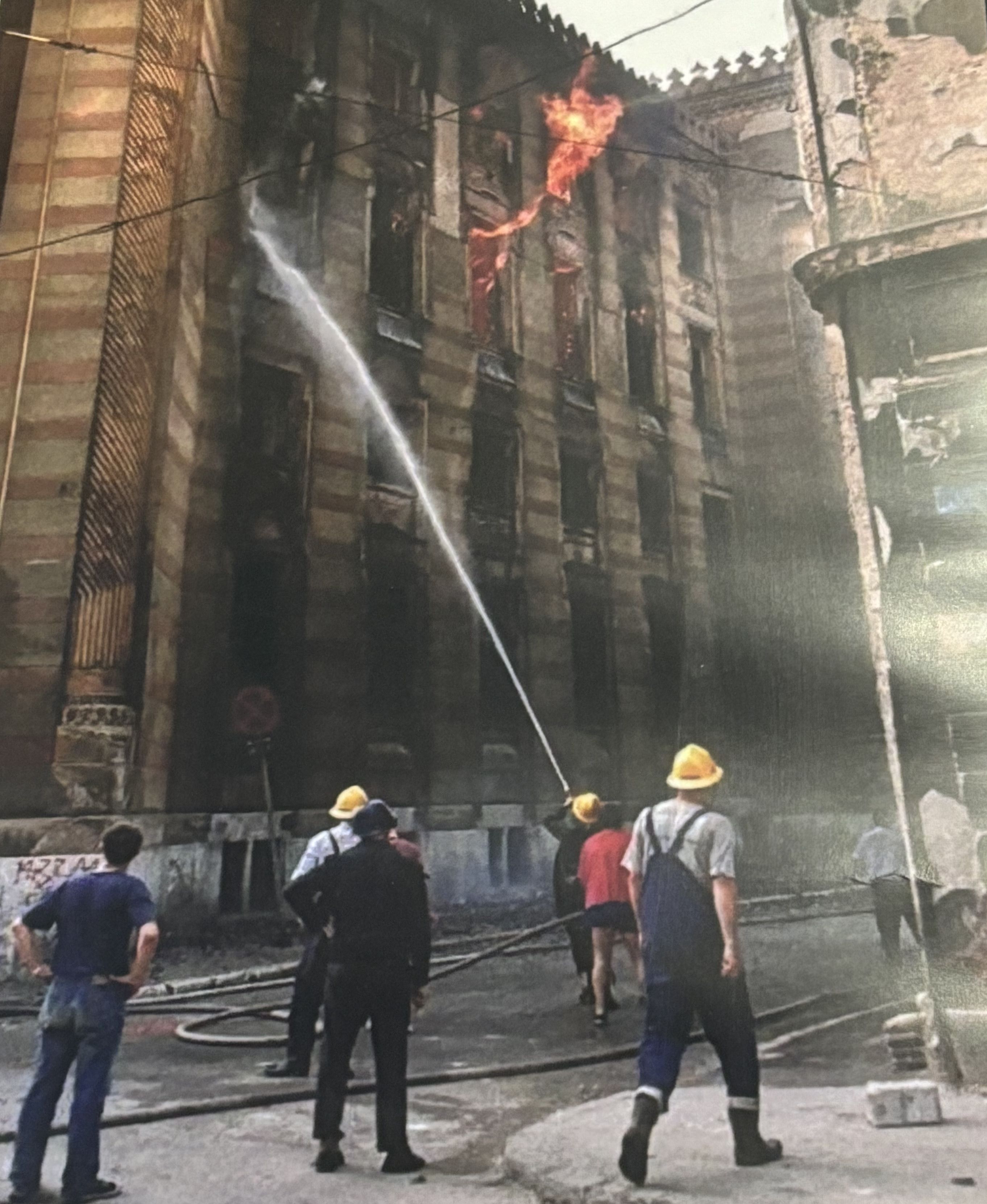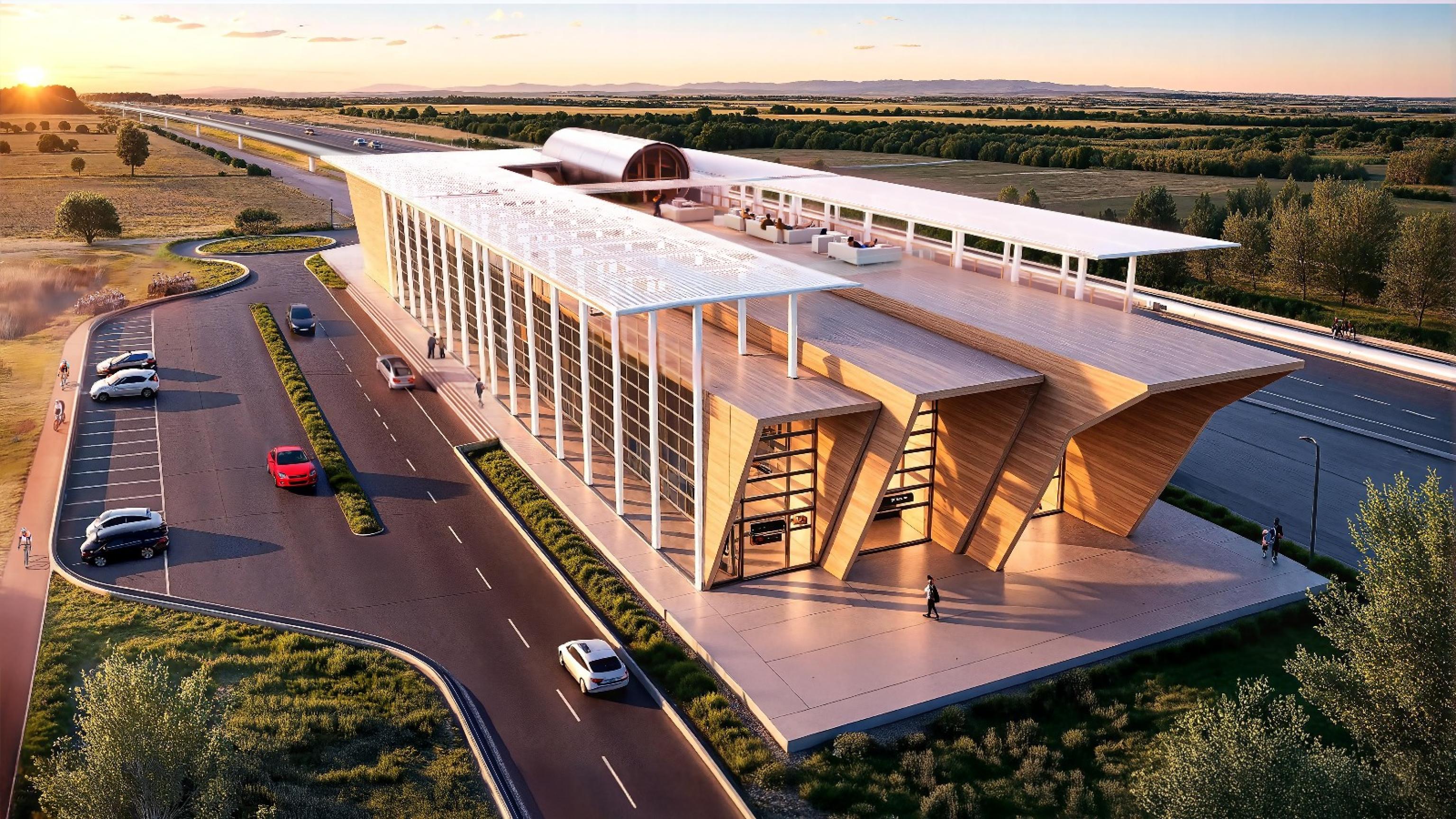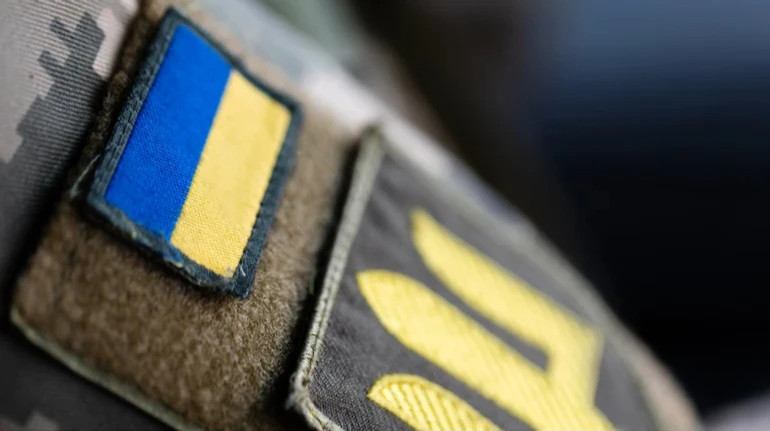« For us it was the end of the world »: the devastation of the Sarajevo library (and the incredible concert that returned to make her live)

The National Library of Sarajevo – considered sacred, by the inhabitants of the city – was destroyed in the war which saw its beginning 33 years ago. This is the story of that building, now reborn – and of the incredible concert, between the rubble, of 19 June 1994
Sarajevo – Greening green, red, blue, blue windows. They let the sun filter inside the Sarajevo National Library While the steps resonate in the almost religious silence on the marble floor. The room is large, the ceiling very high. The columns that are now shiny and intact, on June 19, 1994 they were riddledtormented, reduced to the bone.
That night, a man in elegant shoes and blue trousers made his way between rubble and stones, went up the stools ruined in the middle of the rubble, staying to where he put his feet. He arrived on a platform in the middle of the outward library, and looked around. He was Zubin MehtaIndian, one of the best conductors in the world. He raised an arm and the music began: Mozart, the Requiem in D minor K 626. The only spectators were the same Sarajevo Philharmonic Orchestra and the Choir of the National Theater. Public and actor together, they began to play and sing in an atrium now devastated.
Over two years had passed since the beginning of the War in Bosnia HerzegovinaSarajevo has been under a Serbian siege since April 1992, the city would have had to wait until 1996 to be able to bundle the wounds: in total, The Bosniaci were prisoners of their own capital for 1425 days. « Perhaps the days should be called » horror « in Sarajevo, because this is what they have become, » he wrote in his diary Zlata, 13 years old, the Anna Frank Balkan.
Mornings in which to go out to buy bread it meant jeopardizing one’s lifein which the bridges were crossed by running, in which a deceased was going to cry at the funeral, and there was a risk of returning to having to buy another coffin. There was no right to die, nor to be born: the maternity department of the hospital was one of the first targets. A 60 km iron ring tightened the city in a suffocating grip, on the heights and roofs the sniper stuck aimed at men, women, elderly, children, animals.
And also to buildings such as Vijećnica, the library.
An imposing structure whose exterior is repainted with yellow and brown horizontal lines, thick and interspersed with balconies. Today it has a fresh, clean, tidy appearance. There are no more traces of that fire that devoured her from inside for three days, caused by Bombs in the night between 25 and 26 August 1992. Over two million books, periodicals, documents sent in smoke despite the desperate attempts of the librarians to save that priceless heritage. « Vanished in the flames due to the Serbian criminals, » says the commemorative plaque under the porch. In the photos you can still see huge languages of fire that come out of the windowsthe firefighters, small on the ground, look like knights with the yellow helmet attempting to tame a crazy three floors high dragon.
In the midst of this destruction the orchestra played: the concert was broadcast live with the collaboration of the UNHCR, the UN Agency for refugees, and the Venice work; Italian names flow. An invocation of help full of dignity for the international community, by Bosnian and non -Bosnian musicians: « It is a great privilege to show people of this part of the world that we are with them », commented the Spanish tenor José Carreras. “I couldn’t sleep for two nights. This concert has restored meaning to my life, « said the cellist Hidajeta Tankovic. He had had to use a tool borrowed since during an artillery attack the splinters had damaged his. Even the story of another celloist is intertwined with that of the library: Vedran Smailović played for 22 days, exposed and crying, in honor of the 22 civilians killed while they were in line to buy bread.
That Requiem Intoned by the orchestra it was a manifesto to ask to open their eyes and at the same time show the world the resistance of the Bosnian, their ability to preserve the art, albeit deprived of all basic freedom, to cultivate beauty despite everything. Not only in music: the years of the war saw theater flourish, cinema (it was in 1995 that the Sarajevo Film Festival was inaugurated), the cultural events and the events like never before. « We do not let them kill us, » says a banner held by well -kept women to a beauty contest. They are immortalized in the photo like the beautiful, elegant lady walking on the heels passing next to a soldier with a machine gun. It is straight, keeps her head well high, it has two flours of the neck, the perfect make -up and fluffy hair. Remember almost a young Sophia Loren, but she is called Meliha Varešanovićand that image became iconic: «Full of pain and sadness, I dressed and went to work. I had even put the pearls. A grenade fell close to me, people started running away. I didn’t want to run, I stopped and waited for everything to calm down, I pulled my head and started walking. It was April 1994. A foreign photographer took the photo that became famous, I saw her a lot later. And I was happy: The world believed that nothing human had remained there more during the siege, but it was not so». Parades, exhibitions, readings, there was a whole other world that swallowed in those years of fear. It is therefore surprising only up to a certain point that concert in one night in time of conflict, to bring to light the story of a place full of meaning, which had seen the most important historical phases of Sarajevo alternate.
Born as a town hall, Vijećnica had been commissioned in 1892 by the Austro -Hungarian, who had requested was inspired by Islamic forms: Ottoman culture had left a too important sign, Muslim religion was the predominant one. The architects had followed the instructions, Taking inspiration from the mosques of Cairo and the Alhambra of Granadawhose echoes are still visible in delicate sculptures and arches, in the arabesque sinuous on the domes and on the ceilings. One of the designers, Alexander Witek, was thus obsessed with the realization and complexity of the work that some say died in an asylum, others suicide before ending the construction. In 1947 the massive neo-Moorish style building became National Library and University of Bosnia Herzegovinabut his role was so symbolic as to be almost like a church, or a mosque. Azra Nuhefendić, Bosnian journalist and writer, describes the smell that was breathed inside: of dust, time, fat used to preserve the wood. «We entered with caution, in silence, with the breath suspended, trying to cushion the noise of his steps – he remembers ne nor The black snow – The importance of the place came from the beauty and grandeur of the palace and by the fact that, by us, The book was considered a sacred object. We have been educated, in the family, at school and in the various associations, to consider the book as « the best friend ». The libraries were everywhere, races were made to establish those who had read more. For all these reasons, and for the intimate ones never pronounced, The destruction of Vijećnica was experienced as « the end of the world »». It was a cellulose genocide, the violated books entrusted what little that still remained of them in the wind, the words made to last over the centuries that have become mortal, evanescent: «The whole city was covered with browns of burnt paper. The fragile pages flew into the air, falling down like black snow. By grabbing it, for a moment it was possible to read a fragment of text, which an instant later turned before your eyes into ashes, « said Kemal Bakaršić, professor and librarian reported by Nuhefendić. And still the writer Goran Simić, observing the scene from his window horrifying: « Libraràti from the chimney, the characters wandered around the city, mixing with the passers -by and souls of the dead soldiers ».

On 19 June the Requiem, the funeral mass, was played for real and fictitious Bosniaci, for those of meat and for those of paper. Like a body that had lost its heart, the Library waited for patient and apathetic, day after day, for 18 long years, to return to govern the banks of the Miljackha with its fair shape. The reconstruction ended in 2014, but going into his bowels still remain torn books, burned, the covers marked by black spots, victims of an evil, in memory of that tragedy.
Like the library, so even his city is not made to forget: the heartbreaking past of Sarajevo remember him The hills dotted by the white of the cemeteries, with pointed tombstones under an iron -colored sky. And when the clouds do not threaten rain, a child reminds him that jumps on the concrete, stepping on the so -called roses, the holes left by the grenades and filled with red resin, blood flowers lent to an unconscious game. But Sarajevo also remembers another thing: that There may be life where it seems there is not, and that if a skeleton of books has gone in smoke, a fact of music can always be reconstructed.








